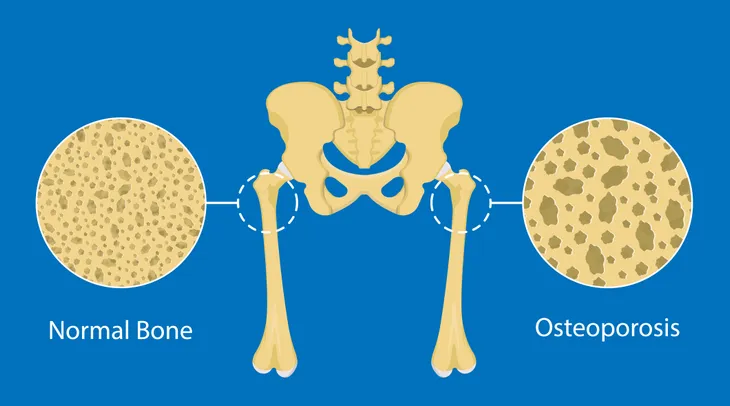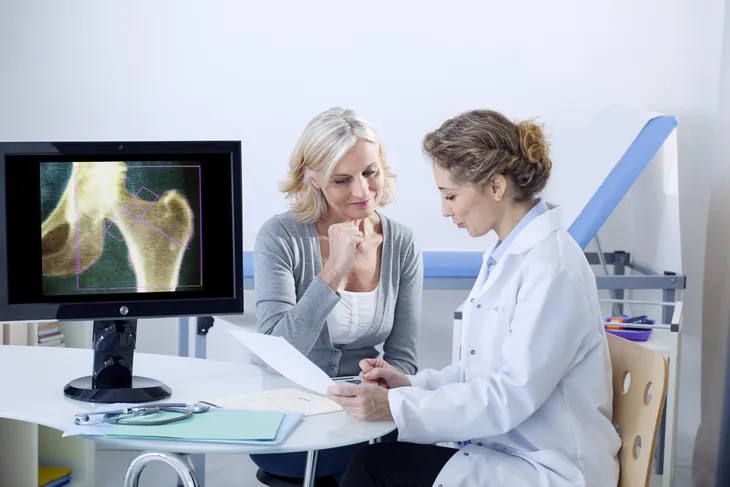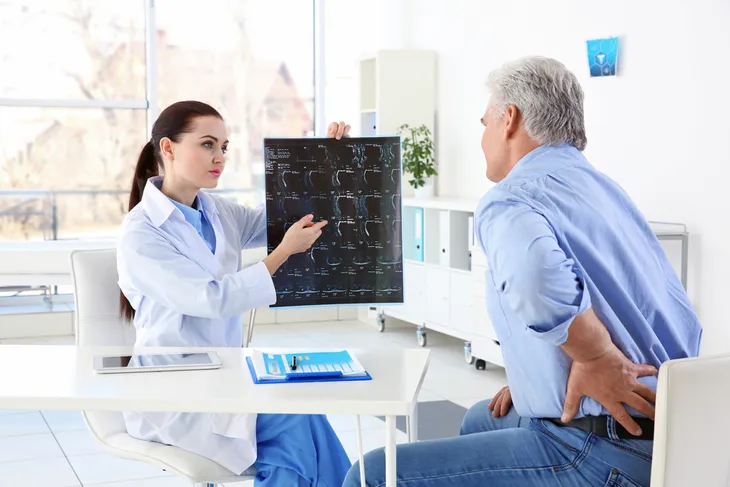The testing area of your local hospital can be intimidating. All that mysterious beeping, lab coats, and machinery do little to calm a patient’s nerves. No, only reading up on, and mentally preparing for, a new procedure can do that.
If you’ve just been referred for a bone density test and are wondering what the next few weeks have in store for you, then you’ve come to the right place. Today, we’re going to rob this potentially uncomfortable experience of its mystique and hopefully ease your mind heading into the procedure. Here’s what you need to know about a bone density test.
What Is a Bone Density Test?
A bone density test, or a bone mineral density test is used to measure the strength of your bones. It’s a tool that doctors use to determine if a patient has osteoporosis.
Osteoporosis is a condition that can cause your bones to get weak and thin, ultimately leading to breaks. Unfortunately, osteoporosis can be difficult to spot, with most sufferers remaining undiagnosed until they break a bone.
Who Should Get One?
Bone density tests aren’t just given to anybody walking in off the street. To get one, you will need a referral from your doctor. Thankfully, most doctors recommend bone density tests liberally.
So who should get one? Women aged 65 or older, postmenopausal women 50 or older, and 50-year-old men with other risk factors should get a bone density test. Those with back pain without any cause, organ transplant recipients, patients whose posture has gotten hunched, and individuals who have lost more than 1.5-inches of their height may also need one.
How the Test Works
Bone density tests use a machine called a DXA to examine the mineral density of a patient’s bones. Think of it like a more specialized x-ray device that works similarly to the ones you’ve no doubt interacted with in the past.
When active, the DXA machine sends an invisible beam of low-dose x-rays through the bone that is being examined. The machine uses x-rays of two distinct energy peaks to distinguish between soft tissue and bone and relies on special software to determine the bone’s mineral density.
How to Prepare
Your doctor will provide you with a rundown of preparation steps, but in case you’ve forgotten them, there are a few important things to know.
If you take calcium supplements regularly, avoid them for at least 24-hours before you are scheduled to take your test. Before leaving for your test, it’s recommended that you wear comfortable and loose clothing, while also avoiding anything made of metal like zippers, keys, belts, buttons, and jewelry.
Types of Bone Density Tests
There are two types of bone density tests available to you today. A central DXA test is the most thorough, the most reliable, and the most expensive of the two. Central DXA tests zero in on the bone density of common osteoporosis trouble spots, your spine, and hip bones.
Furthermore, peripheral tests are less costly and read the bone density of a patient’s wrist, finger, and heel. Regardless of which test you choose, bone density tests are quick and painless procedures and are completed fully clothed.
What to Expect
The Mayo Clinic says, “if you have your bone density test done at a hospital, it’ll probably be done on a device where you lie on a padded platform while a mechanical arm passes over your body.” The test typically takes roughly 10 to 30-minutes.
If you require a peripheral test for your finger, wrist, or heel, a small, portable machine is typically used. The source also explains if your peripheral test is positive, your doctor may recommend a follow-up scan on your spine or hip to confirm your diagnosis. This is because “a measurement taken at your heel usually isn’t as accurate a predictor of fracture risk as a measurement taken at your spine or hip.”
How to Read Results
You most likely won’t be left to read your bone density results all by yourself. The radiologist will most often send your results off to the physician that referred you to the test, and they’ll walk you through your results. Still, knowing the terminology should help you better understand the full picture.
Bone density test results appear in the form of two separate scores. The first, your T score, is a number that shows the amount of bone you have compared to a young adult of the same gender with peak bone mass. A score of -1 and above signifies normal bone density, -1 to -2.5 is representative of low bone density, and -2.5 and above is considered osteoporosis.
The other number you’ll no doubt learn about is your Z score. Your Z score compares your bone mass to other people of your age, gender, and relative size.
Benefits
Bone density tests are truly wondrous procedures designed to alert medical professionals of serious medical conditions before they get out of hand. They don’t require any anesthesia, are entirely noninvasive, and rely on less than one-tenth the amount of radiation compared to a standard chest X-ray.
DXA tests are the best tool available to diagnose osteoporosis and estimate an individual’s risk of breaks and fractures. Though we will talk about the risks shortly, it’s important to note that the benefits of bone density testing dramatically outweigh what minimal risks exist.
Risks
DXA tests present minimal risks to patients, that much is sure. Having said that, radiation exposure rarely comes without threats. Excessive exposure to radiation presents a slight cancer risk.
Pregnant women may still be able to undergo a DXA procedure, but they should notify their doctor of their pregnancy before doing so. Other than that, bone density tests are incredibly safe and resoundingly free of complications.
Limitations
As incredible as these machines are, there are certain limitations to the results that they end up with. For instance, they may be able to provide patients with their relative fracture risk level, but they can’t be relied on to predict who will experience them or where they will occur.
Patients with spinal deformities or those who have undergone spinal surgery in the past shouldn’t solely rely on bone density tests as their underlying condition may interfere with the results.
Lastly, follow-up bone density test results can only really be compared to other results taken with the exact same machine. So, keep that in mind before you travel 4-hours out of town to the quickest available appointment.
How Often Should You Get Tested?
The answer to testing frequency depends on your medical history. If you’ve already been diagnosed with osteoporosis and are receiving medications to treat it, you should expect to have to take a bone density test every one to two years.
Otherwise, the frequency of bone density testing is typically determined by your primary care physician. If you’re interested in undergoing your first test, ask your doctor for advice and a potential referral.
The Takeaway
Being confronted with the prospect of undergoing an unfamiliar medical examination can be nerve-wracking. The term “bone density test” certainly doesn’t inspire a lot of confidence in anyone that’s never heard the term before. More reason to read up on the procedure and get yourself mentally, physically, and emotionally prepared.
Thankfully, bone density tests are quick, painless, and non-invasive. They’re also incredibly beneficial and present very limited health risks.















